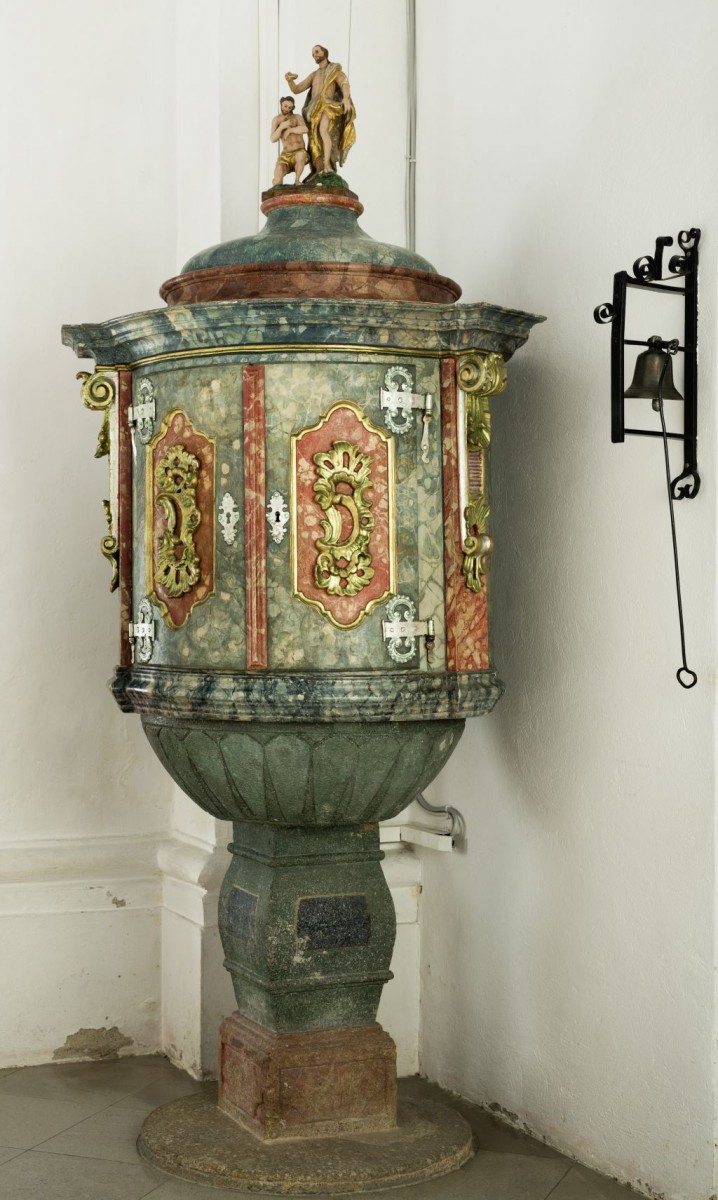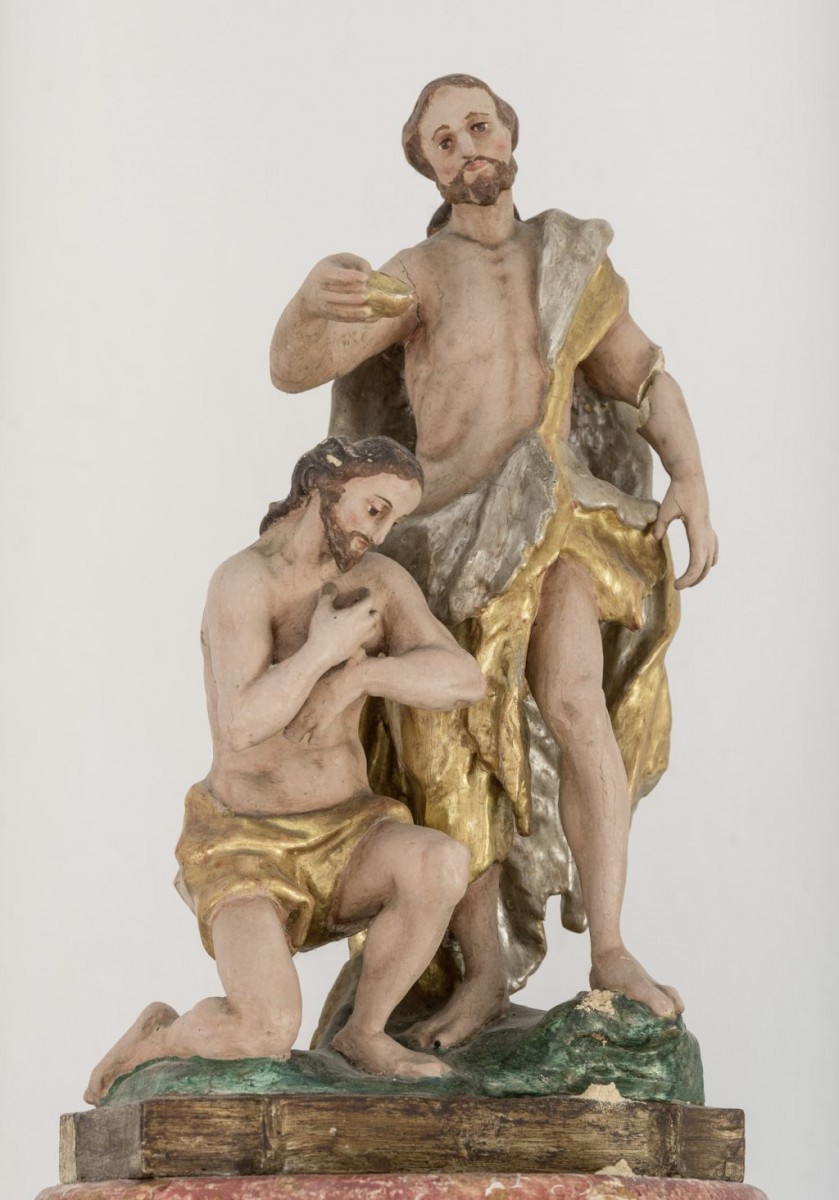Location
Croatia, Zagreb County, Kloštar Ivanić
Parish Church of the Assumption of the Blessed Virgin Mary (Župna crkva Uznesenja Blažene Djevice Marije)
Artwork
Baptistery in the Parish Church of the Assumption of the Blessed Virgin Mary in Kloštar Ivanić
Type
Baptistery
Dimensions
Height: 156 cm, width: 112 cm
Critical History
The baptistery was completed in the period between 1761, when the canonical visitation reported on the absence of a baptistery1 and 4 of September 1763, when the newly built and completely furnished church was consecrated by Stjepan Pucz, the Provost of Zagreb and Bishop of Belgrade. The baptistery with its accessories was first mentioned in the canonical visitation of 1765.2 The sculptural group of the Baptism of Christ (37.5 x 20.5 x 13 cm) can be compared to other small-scale sculptures by Franz Anton Straub, whereas the posture and composition is similar to the group of the Baptism of Christ by Philipp Jakob Straub now stored in the Universalmuseum Joanneum, Alte Galerie, Graz. The author of the repolychromy from 1903, Petar Rutar, was identified on the basis of comparison with works on altars mentioned in the parish chronicle.3 The renovation of 1903, was financed by the High Royal Land Government, Department of Religion and Education.4
Construction / Execution
The baptistery doors were fixed with shell-shaped silvered hinges.
Components
- Carpentry
- Author: Franz Anton Straub (Wiesensteig 1726 – Zagreb ca. 1774)
- Completed: 1759 – 1763
- Technique(s): stone carving, wood carving
- Material(s): wood
- Whrought ironwork
- Completed: 1759 – 1763
- Technique(s): forging
- Material(s): iron, silver leaf
- Sculpture
- Author: Franz Anton Straub (Wiesensteig 1726 – Zagreb ca. 1774)
- Completed: 1759 – 1763
- Material(s): wood
- Polychromy
- Completed: 1759 – 1763
- Technique(s): tempera, water gilding
- Material(s): gold leaf, oil, silver leaf
- Polychromy
- First repolychromy
- Author: Petar Rutar (Cerkno pri Idriji 1856 – Osilnica 1948)
- Completed: 1903
- Patron(s): High Royal Land Government, Department of Religion and Education, government
- Technique(s): oil gilding, stencil ornamentation, water gilding
- Material(s): gold leaf
Comment
The repolychromy from 1903 by Petar Rutar no longer exist. The restored polychromy from the 18th century is visible.
Conservation-restoration
- 1990–1991
Strategy: removing one or several historic repolychromies, removing partial repairs, removing patina, removing varnish
Approach to the presentation of losses
Reintegration of lacunae – mimetic: total
Reconstruction of losses: total
Treatment Description
The baptistery was restored in 1990–1991, when the repolychromy by Petar Rutar from 1903 was removed. The work was carried out by the private restorer Velislav Gobeljić.
Images
- The baptistery in Parish Church in Kloštar Ivanić (Croatian Conservation Institute Photo Archive, photo by Goran Tomljenović, 2018)
- The sculptural group of the Baptism of Christ (Croatian Conservation Institute Photo Archive, photo by Goran Tomljenović, 2018)
Catalogue entry prepared by Ksenija Škarić and Martina Ožanić
Recommended citation: Ksenija Škarić and Martina Ožanić, Baptistery in the Parish Church of the Assumption of the Blessed Virgin Mary in Kloštar Ivanić, in: TrArS – Tracing the Art of the Straub Family, 2018, (accessed 19/10/2025) URL


